Beginner's Guide to Aquaponics With a Fish Tank
So, you’ve decided to add a touch of nature to your living space with a fish tank. But what if we told you that your fish could also help you grow fresh produce? This is where aquaponics with a fish tank come in as your best option.
Imagine a harmonious ecosystem where your finned friends play a vital role in nurturing vibrant plants while you reap the benefits. Interested in discovering how this symbiotic relationship can transform your home?
Let’s explore the fascinating world of aquaponics with a fish tank and unlock the secrets to this sustainable gardening method.

Key Takeaways
- Combine aquaculture and hydroponics for efficient plant growth using fish waste nutrients.
- Choose appropriate fish and plants for a balanced ecosystem in your aquaponics system.
- Install a reliable filtration system and monitor water quality for system success.
- Regularly maintain and troubleshoot issues to ensure optimal health for fish and plants in your system.
Aquaponics Basics and Overview
Exploring the fascinating world of aquaponics reveals a sustainable and innovative system that harmoniously combines aquaculture and hydroponics. In aquaponics, fish play a vital role in the ecosystem by providing the necessary nutrients for plants to thrive.
This closed-loop system allows for the efficient use of water, with a 90% reduction compared to traditional agriculture methods. By harnessing fish waste, plants grow abundantly, creating a harmonious environment where both components benefit each other.
There are various types of aquaponics systems, ranging from small-scale setups to larger commercial operations. These systems offer the opportunity to grow a wide variety of food, from leafy greens to herbs and even fruits.
DIY aquaponics systems have gained popularity due to their accessibility and ease of setup, making it achievable for individuals to experience the joys of cultivating their food in a sustainable manner. Embrace the world of aquaponics and witness the beauty of this symbiotic relationship between fish and plants in your own home.
Setting Up Your Fish Tank System
Selecting the appropriate size and material for your fish tank is crucial for establishing a successful aquaponics system. When choosing a fish tank, consider the number and type of fish you plan to raise.
Opt for a non-toxic, sturdy material such as food-grade plastic or glass to ensure a safe environment for your aquatic friends. Factors like water volume, surface area, and shape play a significant role in the well-being of your fish within the aquaponics system.
To maintain optimal conditions for your fish tank, provide adequate filtration and aeration. Monitoring water temperature, pH levels, and ammonia is essential for ensuring water quality and fish health. Regularly check these parameters to make any necessary adjustments promptly.
By keeping a close eye on these aspects, you create a thriving ecosystem where your fish can flourish. Remember, the key to successful aquaponics lies in creating and maintaining optimal conditions within your fish tank.
Related Post: 7 Best Aquaponic Betta Fish Tanks for a Beautiful and Sustainable Home Aquarium.
Choosing Fish and Plants
When designing your aquaponics system, it is vital to carefully consider the specific fish and plants that will thrive in this symbiotic environment. Select fish species like tilapia, catfish, or goldfish known for their waste production, which is suitable for plant nutrition in aquaponics systems.
Choose plants such as lettuce, herbs, tomatoes, or peppers that thrive in the nutrient-rich water environments of aquaponics setups. Ensure the temperature tolerance and compatibility of fish species with the plant growth requirements for a successful aquaponics system.
Monitor the growth and health of plants regularly to guarantee they receive adequate nutrients from the fish waste in the closed-loop aquaponics system. Opt for a diverse selection of fish and plants to create a balanced ecosystem within your aquaponics setup for optimal growth and sustainability.
| Fish Species | Plant Selection |
|---|---|
| Tilapia | Lettuce |
| Catfish | Herbs |
| Goldfish | Tomatoes |
Step-by-Step System Installation
For a successful aquaponics system installation, ensure you have a well-thought-out plan that incorporates key factors like fish tank size, location, and water quality maintenance. Select a fish tank size that suits the number and type of fish you intend to raise, ensuring there’s enough space for them to thrive.
When setting up your system, place the fish tank in an area with stable temperatures and minimal direct sunlight exposure to prevent fluctuations that could stress the fish. Securely position the tank to bear the weight of the water and fish.
Install a reliable filtration system to maintain water quality by removing waste and ensuring a healthy environment for both fish and plants. Consider the compatibility of fish species with your aquaponics system and the plants you plan to grow, as harmony between all components is essential for a flourishing ecosystem.
Maintenance and Troubleshooting Tips
Regularly maintaining and cleaning your aquaponics system components, such as the fish tank, grow bed, and filters, is crucial for ensuring optimal functionality and a thriving ecosystem. By addressing leaks or malfunctions promptly, you can prevent further damage and maintain a balanced ecosystem within your aquaponics system.
Keep a close eye on plant nutrient deficiencies to promote healthy plant growth, supplementing when necessary to ensure your plants thrive. Troubleshoot common issues like algae growth or pest infestations promptly to maintain a harmonious environment for your fish and plants.
Seeking advice from aquaponics experts or online communities can provide valuable insights into effective maintenance and troubleshooting techniques. Below is a table summarizing key maintenance and troubleshooting tips for your aquaponics system:
| Maintenance Tips | Troubleshooting Tips |
|---|---|
| Clean components regularly | Address algae growth promptly |
| Monitor nutrient levels | Identify and treat pest infestations |
| Check for leaks | Adjust system balance if issues arise |
| Ensure filters are clear | Seek expert advice if needed |
| Maintain a balanced ecosystem | Monitor for any signs of nutrient deficiencies |
Frequently Asked Questions
Can I Use My Fish Tank for Aquaponics?
You can definitely use your fish tank for aquaponics! Ensure fish tank compatibility, maintain water quality for plant growth, cycle nutrients naturally, and promote fish health. Enjoy the benefits of harvesting fresh produce in an indoor setup with proper lighting and system maintenance.
How Do I Turn My Fish Tank Into an Aquaponics System?
To turn your fish tank into an aquaponics system, start by adding a grow bed on top. Your fish waste will nourish the plants, which will filter water for the fish. It’s a sustainable way to grow food efficiently in a small space.
What Is the Best Aquaponic System for Beginners?
For beginners, a media bed system like Flood and Drain or Ebb and Flow is ideal. They’re low maintenance, cost-effective, and simple to operate. Start with AquaSprouts Garden or similar systems for successful aquaponic setup and growth.
How Big of a Fish Tank Do I Need for Aquaponics?
You need a fish tank of appropriate size for aquaponics based on fish length, species, and plant bed size. Consider water quality, nutrient cycling, system maintenance, pH, temperature, lighting, and pest management. Get started with a 20 to 40-gallon tank.

Conclusion
Now that you’ve dipped your toes into the world of aquaponics with a fish tank, get ready to dive deep into a sustainable oasis of food production.
With the right setup, maintenance, and a little love for your fish and plants, you’ll be harvesting fresh veggies and enjoying the beauty of your aquatic ecosystem in no time.
Embrace the wonders of aquaponics and watch your garden flourish like never before!
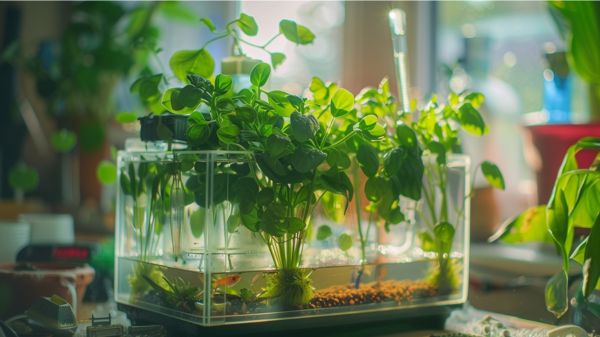
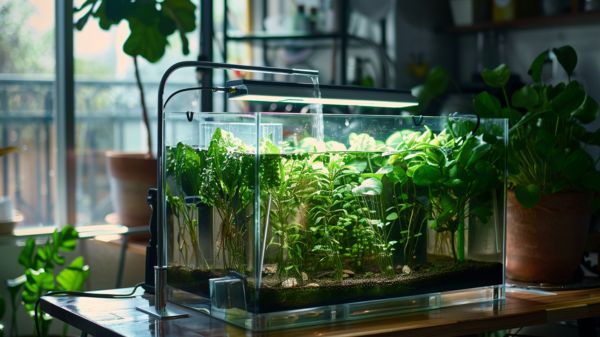
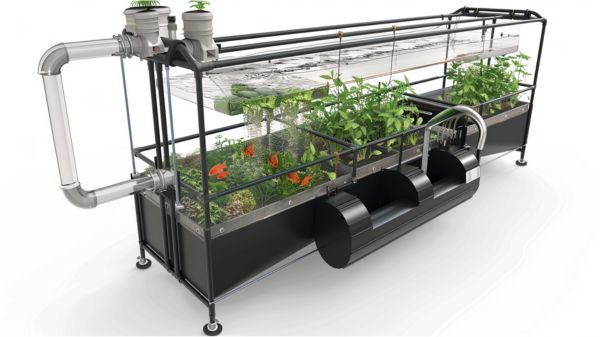
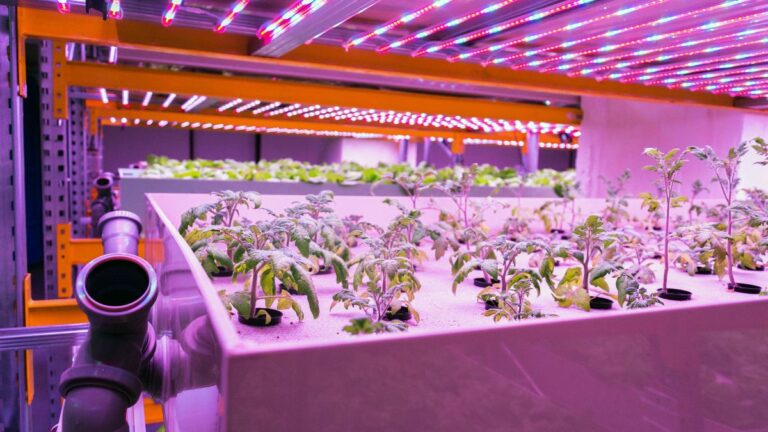
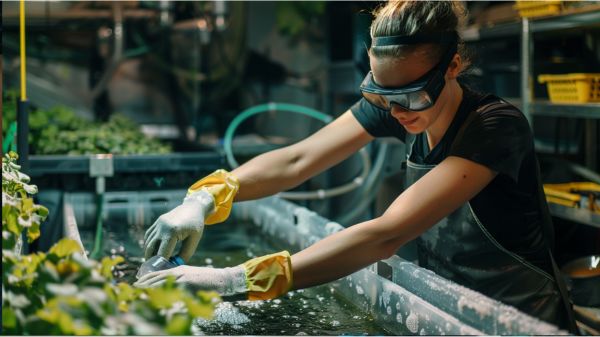
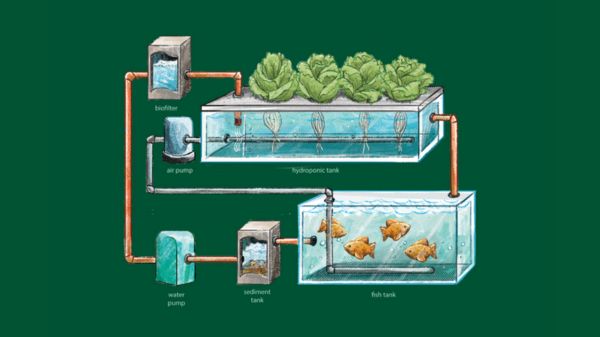

One Comment
Comments are closed.